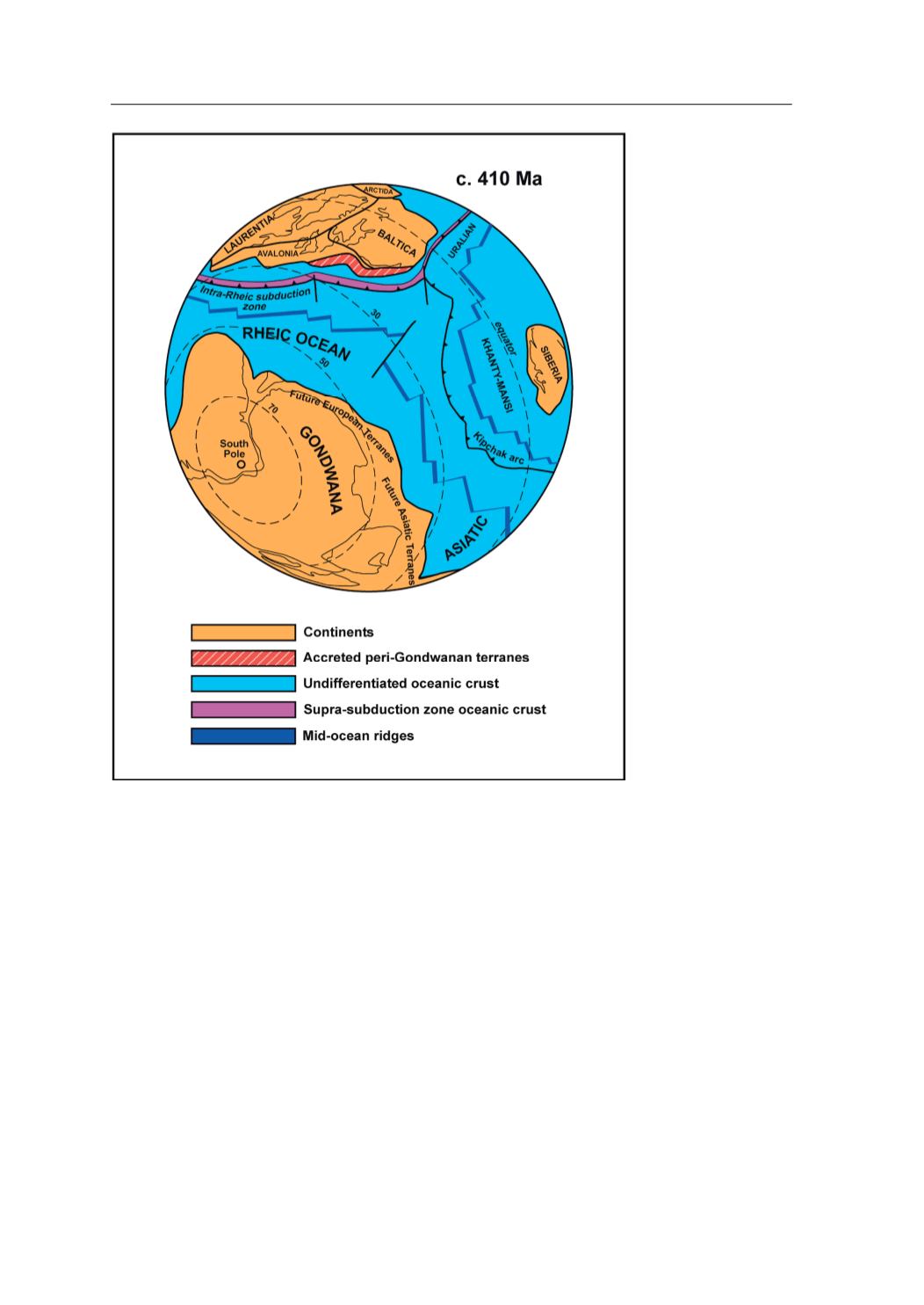
consists of
c.
500 m of greenschists with some al-
ternations of pelitic phyllites and micaschists and
scarce metagabbros and serpentinites. According
to the Hf-Th-Ta diagram of Wood (1980), the
mafic rocks show transitional compositions be-
tween N-MORB and island-arc tholeiites. They
also show slight enrichment in trace elements in
relation to N-MORB (Sánchez Martínez
et al.
,
2007b) (Fig. 12c).
U-Pb zircon dating of a mylontic greenschist
yielded an age of 400 ± 3 Ma (Arenas
et al.
,
2014b), coeval with the protolith ages obtained
in the Careón and Purrido ophiolites. Lu–Hf
zircon isotope signatures clearly indicate con-
tributions from an old continental source. εHf
values are negative (generally below εHf = -5),
and thence not compatible with extraction from
a juvenile mantle source (Fig. 14). Such Lu-Hf
zircon data are similar to those obtained in the
Purrido Ophiolite. Also in this case, they are not
compatible with the generation of this ophiolite
in a setting far from continental domains.
The internal structure of the Moeche Ophiolite
is not well known. It shows a mylonitic-ultramy-
lonitic regional schistosity developed in green-
schist facies conditions. The presence of this per-
vasive fabric makes identifying primary igneous
features difficult, thus hindering assessments on
their basaltic or gabbroic nature. The regional
schistosity is axial planar to isoclinal recumbent
folds of, at least, decametric size.
40
Ar/
39
Ar dating
on the mylonitic fabric of the phyllites yielded an
age of
c.
364 Ma (whole rock analysis; Dallmeyer
et al.
, 1997), which is slightly younger than the
34
3. GEOLOGICAL FRAMEWORK
Fig. 13.
Paleogeographic
reconstruction of the
Rheic domain at the Silu-
rian-Devonian transition
(modified after Stampfli
and Borel, 2002). Note
the generation of new
oceanic lithosphere asso-
ciated with intra-oceanic
subduction directed to
the North (Sánchez Mar-
tínez
et al
., 2007a).








